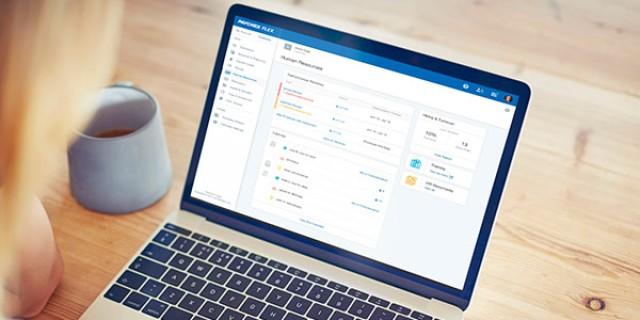If you own your business or work as a sole proprietor, you are responsible for paying your self-employment tax (sometimes called SE tax) and maintaining proof of your income and expenses. At year-end, you'll also need to know which tax form requirements apply to you and how to calculate your tax obligations to avoid penalties.
Here's what you need to know to understand the self-employment tax.
What Is Self-Employment (SE) Tax?
The self-employment tax is the amount self-employed individuals pay to the government to meet Social Security and Medicare obligations. While traditional employers pay a portion of these taxes on behalf of their employees, the same cannot be said for sole proprietors, freelancers, contractors, partners in a trade or business, and other self-employed individuals, who must pay both the employee and employer portions of Social Security and Medicare taxes. Together, these payments are called self-employment (SE) tax. Anyone meeting the criteria for self-employment and earning $400 or more in a year must pay self-employment taxes to the federal government.
What Is the Self-Employment Tax Rate?
The 2025 self-employment tax rate equals 15.3% for individuals earning up to 176,100. Social Security tax makes up 12.4% of this total (6.2% for the employee portion and 6.2% for the additional employer portion the self-employed individual pays). Medicare tax equals 2.9% (1.4% for the employee portion and 1.45% for the employer portion paid by the self-employed individual).
Because the Social Security portion of the tax applies only to earnings up to $176,100, you can use the Medicare-only rate of 2.9% to calculate self-employment tax on additional income earned above this amount. Any self-employment income over $200,000 is subject to an additional 0.9% of Medicare tax for single filers or heads of households, or $250,000 for married couples filing jointly.
How Does Self-Employment Tax Work?
Businesses with paid employees implement a payroll process to withhold taxes and remit them to the government, but self-employed individuals must complete these steps on their own. Quarterly estimated taxes should be paid throughout the year, with a final calculation and payment when you file your annual tax form.
As a self-employed individual, you must calculate both income tax and self-employment tax using the correct tax forms:
- Income Tax: When completing federal Form 1040, use Schedule C to calculate taxable income. using Schedule C.
- Self-Employment Tax: Use Schedule SE to calculate self-employment tax separately. You'll also be able to deduct 50% of your total self-employment tax owed as a business deduction, which will lessen your overall tax liability.
Why Do You Pay Self-Employment Tax?
Because self-employed individuals do not pay Federal Insurance Contributions Act (FICA) taxes, the self-employment (SE) tax was created in 1951 to help them build up the Social Security (and, starting in 1966, Medicare) fund when some self-employment professions began to be allowed to receive benefits. Essentially, the SE tax is a combination of the employer and employee share of FICA, applied to net earnings from self-employment.
When Do You Have To Pay Self-Employment Taxes?
The SE tax applies if net earnings from self-employment are $400 or more. Net earnings, which are essentially profits, result from self-employment as a sole proprietor, independent contractor, general partner, or limited liability company (LLC) member (there are some exceptions which we'll address later). Limited partners are not subject to self-employment tax except to the extent they receive guaranteed payments for services rendered to or on behalf of the partnership. If you receive net earnings from more than one business, you will combine the amounts on Schedule SE. If there is a loss in one business, that loss reduces net earnings from another business that is subject to SE tax.
For spouses filing jointly, each must complete a separate Schedule SE if they have net earnings from self-employment. Spouses who co-own a business and both materially participate in it can elect to treat it as a joint venture (instead of a partnership). For SE purposes, each reports their share of net earnings from the business. For spouses in community property states, only the spouse who participates in the business reports the net earnings from it. If both participate, each pays SE tax on their distributive share.
Usually, wages received by employees are exempt from self-employment tax. Instead, they are subject to FICA. This is true even if they are statutory employees who can file Schedule C to report their earnings and business-related expenses.
Special Rules for LLC Members
Are LLC members treated like general partners subject to SE tax, or are limited partners exempt from SE tax? According to the IRS, certain LLC members who are active in the day-to-day operations of their businesses may be viewed as self-employed and must calculate SE tax in the same way as general partners. IRS stipulations regarding the distributive share of business income for an LLC member who is merely an investor are less clear regarding the payment of SE tax. If you hold the status of an LLC member in a small business, you should consult a tax expert to determine if you must pay self-employment tax related to your earnings.
Optional Self-Employment Tax
Self-employed individuals who earn income below a set amount can elect to pay self-employment tax to accrue Social Security and Medicare credits. There is an optional method for self-employed farmers and another optional method for other self-employed individuals.
What Is the Difference Between Income Tax and Self-Employment Tax?
Income tax is the amount you pay the government based on your annual income from all sources, including self-employed earnings.
Self-employment tax is a subset of income tax, which covers Social Security and Medicare taxes. Employers typically withhold these two amounts from employees' paychecks. In contrast, self-employed individuals must calculate these amounts based on their earnings and be responsible for paying the correct amounts each year. In addition to self-employment tax, self-employed individuals are also required to remit estimated quarterly payments for their entire income tax liability.
How To Calculate Self-Employment Tax When Filing Your 1040
You will include Schedule SE with your annual Form 1040 to calculate self-employment tax on your net earnings. More specifically, net earnings subject to SE tax include the following amount:
- Schedule C filers (independent contractors including those working in the gig economy; sole proprietors; single-member LLCs): Line 31 of Schedule C, net profit or (loss).
- Schedule F filers (farmers): Line 34 of Schedule F, net farm profit or (loss).
- Form 1065 filers (partners; LLCs with two or more members): Schedule K-1 (Form 1065), box 14, code A.
If you have more than one business from which you receive net earnings, you will combine the amounts on Schedule SE. If there is a loss in one business, it reduces the net earnings from another subject to SE tax.
You can calculate the self-employment tax once you have totaled your net earnings:
- Enter your net earnings on the Schedule SE and multiply this amount by 92.35% to arrive at the total taxable amount. (The first 7.65% of net earnings is not subject to tax.)
- If earnings are equal to or less than $176,100, multiply the entire amount by 15.3%.
- Multiply any earnings over $176,100 by the Medicare rate of 2.9%.
- Multiply any earnings over $200,000 by 0.9% to account for the additional Medicare tax.
How Much Is Self-Employment Tax Going To Cost?
A self-employed individual earning $300,000 would calculate their tax as follows:
- $300,000 X .9235 = $277,050 taxable income
- $176,100 X .153 = $26,943.30 Social Security and Medicare Tax
- $277,050-$176,100 = $100,950 Medicare-Only Income
- $100,950 X .029 = $2,927.55 Medicare-Only Tax
- $277,050-$200,000 = $77,050 Additional Medicare Income
- $77,050 X .009 = $693.45 Additional Medicare Tax
Add the three tax amounts ($26,943.30 + $2,927.55 + $693.45) to calculate total self-employment tax of $30,564.30.
You can use tax software to calculate the amounts due or ask your tax preparer to assist with calculating and reviewing your SE tax. Self-employed individuals should consider self-employment tax when figuring quarterly estimated tax payments.
How To Pay for the Self-Employment Tax
Understanding how to file self employment taxes correctly can save you from costly penalties and ensure you're meeting your tax obligations as a self-employed professional. The process involves calculating your net earnings from self-employment, determining your tax liability, and making payments according to IRS deadlines throughout the year.
- Calculate your net earnings using Schedule C (Form 1040). Complete this form to report your business income and expenses, which determines your net profit — the foundation for your self-employment tax calculation.
- Know your taxpayer identification information. You'll need either your Social Security number or Individual Taxpayer Identification Number (ITIN) to file your return and make payments.
- Complete Schedule SE (Self-Employment Tax). Use your net earnings from Schedule C to calculate your exact self-employment tax liability as described above.
- Make quarterly estimated tax payments. Pay your estimated self-employment tax four times per year using Form 1040ES, with deadlines on January 15, April 15, June 15, and September 15.
- File your annual return by the deadline. Submit your completed tax return by April 15 (or October 15 if you file an extension) to reconcile your estimated payments with your actual tax liability.
- Pay any remaining balance or claim your refund. If your quarterly payments fell short, pay the difference by the filing deadline to avoid penalties and interest charges.
What Are the Tax Deductions for Self-Employed Individuals?
While you must calculate and pay self-employment tax when applicable to your net earnings, you may also be entitled to claim certain tax deductions that lower your tax liability. Generally, half of your self-employment tax may be deducted from income on your Form 1040.
For example, if you owe $3,000 in self-employment tax for the year, you can deduct $1,500, effectively reducing the taxable amount. Small business owners with pass-through income may also qualify for a business deduction of up to 20% of their qualified business income.
Other business expenses, such as the cost of advertising, insurance, and work-related travel, may be taken as self-employment tax deductions for federal filing purposes. For example, if you're a freelance graphic designer who spends $500 on design software, $200 on professional insurance, and $300 on client meetings, these $1,000 in legitimate business expenses can be deducted so you pay self-employment taxes on a smaller amount.
These deductions work by lowering your net profit on Schedule C, which directly impacts your self-employment tax calculation since the tax is based on your net earnings, not your gross income.
Required Self-Employed Tax Forms
When preparing your taxes, you may need to file some of the following forms along with your annual tax return.
- 1099-NEC: This self-employment tax form will be completed and sent to you by companies you worked for as an independent contractor. 1099-NEC forms are used to report non-employee income, which is claimed as earnings from self-employment on your annual tax return.
- 1099-MISC: If you receive income through rental payments or royalties, it will be reported to you on Form 1099-MISC.
- Form 1040: The annual federal tax return reports all income, including self-employment income. Specific schedules for self-employed individuals will need to be completed.
- Schedule 1: This supplemental schedule reports additional types of income and adjustments to income, including business income. You will also list the deductible portion of your self-employment tax on this form, which then carries over to the 1040.
- Schedule C: This schedule reports profit or loss from a business, including earnings and expenses related to self-employment.
- Schedule SE: Use this form to calculate self-employment (SE) taxes.
- Form 8829: If you qualify for a home office deduction, use this form to calculate the amount you wish to claim for tax purposes.
To reduce risk of IRS penalties, you may also want to pay estimated yearly taxes using Form 1040-ES.
What Are the Penalties of Not Paying For Self-Employment Tax?
Failing to pay your self-employment tax can result in significant penalties that compound over time. The IRS imposes several types of penalties:
- Failure-To-Pay Penalties: The IRS charges 0.5% of your unpaid taxes per month until the taxes have been paid. If you set up an installment plan to pay the outstanding balance, the rate drops to 0.25% per month.
- Failure-To-File Penalties: If you do not file your tax return by the deadline, you will be charged 5% per month. This amount includes the failure-to-pay penalty if both occur during the same month.
- Interest Charges: Interest accrues daily on any outstanding federal self-employment tax balance.
IRS CP2000
If IRS records do not match what you reported on your tax return, you will receive an IRS CP2000 notice. This notice proposes adjustments to your self-employment tax amount and typically includes the additional taxes owed, plus penalties and interest calculated from the original due date. While a CP2000 isn't technically an audit, ignoring it can lead to the IRS automatically assessing the additional taxes. This is a much more expensive and complicated way to resolve the issue than addressing the discrepancy promptly through the response process.










